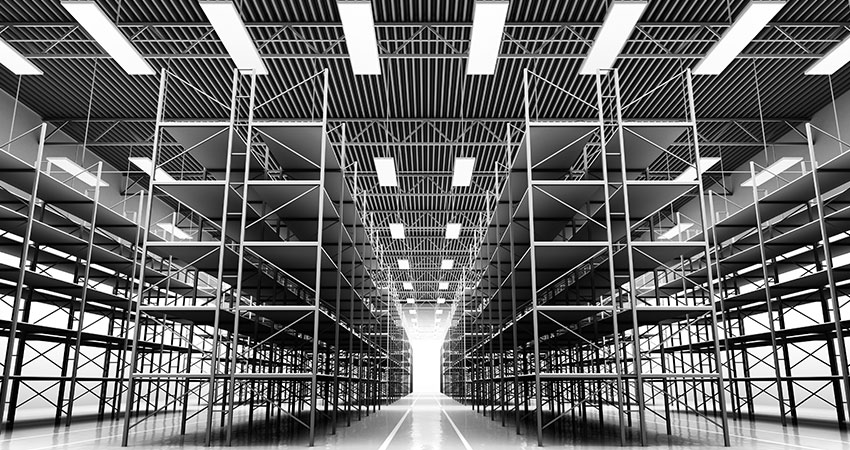As the worldwide ecommerce market continues to grow, so does the need for additional fulfillment center space. Thanks to sites like Shopify and Etsy, it’s becoming easier for small business owners to sell their products online. As their businesses grow, many find that they need more room to store goods.
That’s where an on-demand warehouse comes in. Whether or not you’re using all the space of a warehouse you already own, or thinking about investing in one to rent out, knowing how to design warehouse space is a must. Read on to learn how to optimize your on demand warehouse.
Install a Range of Storage Options
Most on-demand warehouse facilities measure and rent out their space according to pallets. For example, they might advertise slots of 25, 50 or 100 pallets. These might be unnecessarily large for some potential clients, however, so it’s a good idea to offer alternative industrial shelving to appeal to a wide range of businesses.
Among your storage options should be industrial racking, galvanized pallet racking, bins and carton flow racks. This last style of rack uses slanted shelves which can be stacked from one side, with items being picked from the other side. This helps with stock control in that older items will always be the first to go.
Consider Accessibility for Efficiency
As well as offering carton flow racks to your clients to ensure that older items can be easily selected first, think about other ways to enhance the accessibility of materials. This could mean installing rolling ladders to enable quick access to items stored up high, or analyzing the appropriate space according to customer needs.
If you’ll be renting your space to several customers, some are likely to have a higher turnover when it comes to order flow. In this case, it makes sense for their items to be stored in a more easily accessible place. Similarly, the most popular products for all your customers should be stored in a prime spot or hot zone.
Install Clear Signage
An absolute must is optimized signage. Part of the responsibility that comes with running an on-demand warehouse is that you are likely to be picking and packing orders for shipping and delivery. Whether or not this is for multiple clients, you need to keep an accurate count of what is being stored where, to make sure you’re sending out the correct products. Signs should be installed overhead as well as below individual item types.
Examine the Nature of Stored Products
It’s vital to carefully think about the types of customers you pursue, and what kinds of products they want to store in your fulfillment center, i.e. perishable goods requiring cold storage. This would involve additional responsibility with regards to keeping an eye on dates, and properly disposing of unused goods. Whether it’s food, medications or flowers and plants, any goods requiring refrigeration mean additional costs.
Another aspect to consider is the weight of the goods. If you agree to store very heavy products, you must make sure you have the appropriate storage solution in place.
Consider Ways to Optimize the Space
It’s forecast that the need for on-demand warehousing will continue to rise; in fact, the number of warehouses can barely keep up with storage needs. To help combat this, consider ways to optimize the space you already have. One of the most effective methods to increase space is the use of a mezzanine. A mezzanine can give you twice or even three times as much floor space to work with, thereby offering plenty more space to rent out.
Think About the Best Way to Move Materials
In addition to considering how to store products, you need to think about how they’ll be moved around. Depending on quantity, weight, packaging and storage, you might need to invest in a forklift. If there are items stored on a mezzanine, you’ll need to install a pallet gate if pallets or heavy items are to be kept there.
An on-demand warehouse is often a great solution for both ecommerce businesses looking for more space, and facility owners who have more space than they require. Those who fall into the latter category need to give thorough consideration to the layout and design of their space, to make sure it’s suitable for a broad range of potential customers and their products.
Kirstin Monk is Marketing Manager at Hi-Level Mezzanines

